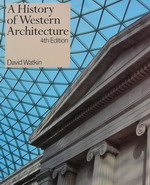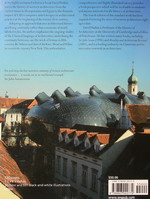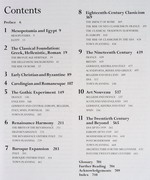2. 1. Your (almost) handbook
Basic Outline : ENCYCLOPAEDIA BRITANNICA: quizs / Partial Exams 1 and 2
El alumno aprende por su cuenta el esquema más básico en la Encyclopaedia Britannica, en las voces que corresponden a Western Architecture.
Western Architecture es un ciudadoso y conciso resumen y debe aprenderse casi de memoria. Es examinable con dos exámenes parciales (modular exams 1 y 2).
Al estar incorporado a una enciclopedia, es fácil ampliar conocimientos: la versión digital es a la vez un diccionario; la significación de cada palabra aparece al clicar sobre ella.
El autor principal y coordinador de la revisión más reciente fue David Watkin. La Encyclopaedia Britannica radica en UK (tradicional) y USA (preferente). La Encyclopaedia comenzada en 1768 es una de las más obras de referencia más seguras del mundo occidental.
La actual, continuamente renovada se ofrece:
- Versión libro: 32 volúmenes. Un buen regalo de boda.
- Versión digital. Recomendable. Conviene comprar directamente en la editorial UK (más cara) o USA. La editorial ofrece versiones de años anteriores a un cuarto de su precio.
- Versión online. Existe una versión free con contenidos muy breves; se amplia por subscripción: nuestra Universidad esta suscrita a esa versión completa. Se entra de dos maneras (desde ordenadores de la Universidad).
-Academic Edition
-Biblioteca de la Universidad de Navarra (Sabio: hacer clic en bases de datos).
More: the Handbook: quiz / Partial exam 3.
El esquema de la Encyclopaedia Britannica fue ampliado por el mismo Watkin y dio lugar al handbook A History of Western Architecture, que sirve de referencia para conocer más sobre el contexto, obtener bibliografía y un breve glosario.
David Watkin es un historiador con un planteamiento muy cercano a Gombrich, capaz de valorar los logros de tradiciones distintas de las italianas o francesas. Su handbook es el más adecuado para alumnos de arquitectura, pues equilibra una suficiente profundidad con una extensión asequible. La versión española no está actualizada; y aunque se tradujera, la edición inglesa siempre será preferible.
El alumno profundiza sobre una de las épocas de la historia de la arquitectura occidental con la ayuda del handbook:
- Watkin, David, A History of Western Architecture, 4ª edición, 2005. London: Lawrence King Publishing / New York: Wapson-Guptill Publications.
Assessment, exams. Calendar
1st QUiz / partial Exam 1 (ENcyclopaedia Britannica)
List of Topics
European Metal Age cultures
Aegean and eastern Mediterranean
Minoan Crete, Mycenaean Greece, Fortification, Palaces, Tombs
[NOT INCLUDED) Western Mediterranean: Bronze Age cultures, Iberia, Balearic Isles, Malta, Sardinia and Corsica, Italy. Iron Age cultures, Iberia, Italy]
Ancient Greek
The early periods, The “Orientalizing” period, The Archaic period ( 750–500 )
The Classical period, Early Classical ( 500–450 ), High Classical ( 450–400 ), Late Classical ( 400–323 ), Hellenistic period
Roman and early Christian
Republic and empire, Building materials, Construction, Design, Types of public buildings, Residential architecture, Town planning, Stylistic development
Early Christian, First period, to 313, Second period, after 313
The Christian East
The early Byzantine period (330–726), The Iconoclastic Age (726–843), The middle Byzantine period (843–1204), The late Byzantine period (1204–1453), Kievan Rus and Russia.
The Christian West
The early Middle Ages, Migratory period, Merovingian period, France, Ireland, England, Spain, Carolingian period, Ottonian period, Prelude to Romanesque in the north
Romanesque
Burgundy, Normandy, Aquitaine, Languedoc, and Auvergne, Provence, Germany and the Low Countries, Iberia, Italy, Norman Italy and Sicily, Palestine
Gothic
Early Gothic, High Gothic, Italian Gothic (1200–1400), Late Gothic, The end of Gothic
2nd Quiz / Partial Exam 2 (ENcyclopaedia Britannica)
List of Topics
The Renaissance
Early Renaissance in Italy (1401–95), High Renaissance in Italy (1495–1520), Italian Mannerism or Late Renaissance (1520–1600)
The Renaissance outside Italy
France, Early Renaissance, Mannerism, Spain and Spanish America, Plateresque, Classical, Herreran, Spanish America, Portugal, Germany, Flanders and Holland, England, Eastern Europe.
Baroque and Rococo
National and regional variations, Italy, Flanders, Holland, Central Europe, North America, Spanish South America, Brazil. Urban design 17th century, 18th century.
Classicism, 1750–1830
Origins and development, National and regional variations, Great Britain, France, Italy, Spain and Portugal, Germany, Scandinavia and Findland, Poland, Russia, United States, Spanish America and Brasil.
3rd / Partial Exam 3. A History of Western Architecture (handbook)
El alumno puede elegir presentarse a una de estas cuatro etapas.
I. Classical Antiquity
List of Topics
1. Mesopotamia and Egypt
9-13. Mesopotamia,
13-18. Egypt,
2 The Classical Foundation: Greek, Hellenistic, Roman
23-31. Hellenic culture,
31-32. The rise of Ionic,
33-41. The classic phase: 480-400 BC
41-41. The Hellenistic background, 41
41-46. Mainland Greece in the fourth century BC...
46-57. The second century BC: sacred and secular buildings
57-60. The rise of Rome
60-64. Republican architecture
64-70. Fora, basilicas and temples: the Roman synthesis
70-82. Palaces, villas and the new architecture of concrete
82-87. Town Planning
87-88. Constantine and the adoption of Christianity
3 Early Christian and Byzantine
89-92. Rome
92-97. Constantinople, Salonica and Ravenna
98-106. Later Byzantine architecture
II. Carolingian, Romanesque and Gothic
List of Topics
4 Carolingian and Romanesque
107-112. The rise of monasticism
112-114. Britain and Spain from the ninth to the early eleventh centuries)
116-122. Ottonian architecture and its influence
122-126. France in the tenth and early eleventh centuries
126-134. Normandy and England in the eleventh and twelfth centuries
134-136. The pilgrimage churches of France and Spain
136-141. Cluny III and the provincial schools of French Romanesque
141-144. Spain in the eleventh and twelf centuries
144-148. Italy
5 The Gothic Experiment
149-150. France
150-155. 'The new light': Abbot Suger and the origins of Gothic
156-159. High Gothic: Reims, Amiens, Beauvais and Bourges
160-164. The Court Style and Rayonnant Gothic
164-165. The Flamboyant style
165-168. Secular buildings in medieval France
168-171. England. Canterbury and its impact
171-173. Lincoln and its impact
173-174. Westminster Abbey
174-177. The impact of Westminster and the origins of the Decorated style
177-180. St Stephen's Chapel and the origins of Perpendicular
180-185. Parish churches and secular building
185-185. Germany and Central Europe, Belgium, Italy, Spain, Portugal
185-189. Cologne, Prague and the Parler dynasty
189-192. German late Gothic
193-193. Secular architecture in Germany and Bohemia
193-194. Belgium
194-201. Early Gothic in Italy
201-210. Gothic in Spain in the thirteenth and fourteenth centuries
III. Renaissance and (Italian) Baroque
List of Topics
6 Renaissance Harmony
211-215. The birth of the Renaissance. Florence and Brunelleschi
215-218. Alberti
218-221. Palaces and town planning in Pienza, Urbino and Florence
221-223. Filarete and Leonardo
223-225. High Renaissance. Rome: Bramante
225-227. St Peter's from Bramante to Maderno
227-230. Raphael, Peruzzi and Antonio da Sangallo the Younger
230-232. Divergencies in Mantua: Giulio Romano
232-237. Michelangelo
237-239. High Renaissance in Verona and Venice: Sanmicheli and Sansovino
239-243. Vignola and the origins of Baroque
243-251. Palladio and High Renaissance harmony
251-251. The Renaissance outside Italy
251-262. France under François I
266-269. Germany
269-271. Eastern Europe
271-273. Netherlands
273-279. England and the growth of the 'prodigy house'
279-283. Town Planning
7 Baroque Expansion
283-286. Italy. The creation of Baroque: Bernini
286-291. An individual voice: Borromini
291-295. Pietro da Cortona
295-299. Contrasting currents in late-Baroque Rome
299-306. Piedmont: Guarini, Juvarra and Vittone
306-309. Genoa, Milan, Bologna and Venice
309-314. Naples and Sicily
IV. Baroque outside Italy and Eighteenth-century Classicism
List of Topics
314-314. Baroque outside Italy
314-323. France
323-335. Austria and Germany
335-354. England
8 Eighteenth-century Classicism
369-369. The impact of Rome
369-373. Piranesi
373-373. The origins of Picturesque
373-377. Lord Burlington and William Kent
377-382. Robert Adam
382-387. Chambers and Wyatt
387-391. Dance and Soane
391-395. The rise of neo-classicism in France
395-400. Soufflot and Ste-Geneviève
400-406. Peyre and de Wailly
406-410. Ledoux and the Picturesque
410-410. The classical tradition elsewhere in Europe
410-412. Italy
412-417. Germany
417-418. Poland
419-421. Scandinavia
421-424. Russia



